#José Lezama Lima
Text
LO INAUDIBLE
Es inaudible,
no podremos saber si las hojas
se acumulan y suenan al encaramarse
la mirona lagartija sobre la hoja.
Nos roza la frente
y creemos que es un pañuelo
que nos está tapando los ojos.
El oro caminaba
después hacia la hoja
y la hoja iba hacia la casa
vacía del otoño, donde lo inaudible
se abrazaba con lo invisible
en un silencioso gesto de júbilo.
Lo inaudible
gustaba del vuelo de las hojas,
reposaba entre el árbol inmóvil
y el río de móvil memoria.
Mientras lo inaudible lograba
su reino, la casa oscilaba,
pero su interior permanecía intocable.
De pronto, una chispa
se unió a lo inaudible
y comenzó a arder escondido
debajo del sonido facetado del espejo.
La casa recuperó su movilidad
y comenzó de nuevo a navegar.
1 de febrero y 1975
_ José Lezama Lima, Poesía Completa, Sexto Piso, México, 2016
17 notes
·
View notes
Quote
Sólo lo difícil es estimulante; sólo la resistencia que nos reta es capaz de enarcar, suscitar y mantener nuestra potencia de conocimiento.
[Only the difficult is stimulating; only the resistance that challenges us is capable of raising, provoking, and maintaining our power of knowledge.]
José Lezama Lima, La expresión americana
14 notes
·
View notes
Text
Cada día que pasa siento la nostalgia de la familia ¿cuántas veces no lo he repetido? Nunca podré ser un ser feliz, pues si tuviese la familia me faltaría la tierra, aunque realmente me conformo con muy poco, pero ya estoy convencido hasta colmar la copa que nunca podré ser feliz, pues soy de esa raza de los que siempre le falta la otra mitad. Toda mi vida he sentido un anhelo, un deseo, que ni yo mismo puedo precisar, pero que es tan poderoso que todavía basta para mantenerme en pie.
José Lezama Lima
8 notes
·
View notes
Text
Poésie - José Lezama Lima, Pabellón del vacío [Le Pavillon du vide]
Poésie - José Lezama Lima, Pabellón del vacío [Le Pavillon du vide] #Philosophie #Poésie #JeudiCestPoésie #Poesia #Cuba #Espagnol #Español #Vide #Tokonoma
Poésie et Philosophie
Poésie n° 26
“Le “Pavillon du vide” est le dernier poème que José Lezama Lima écrivit avant sa mort. Il était particulièrement cher à María Zambrano.” Laurence Breysse-Chanet, Revue Europe, 2014.
Pabellón del vacío
Voy con el tornillopreguntando en la pared,un sonido sin color,un color tapado con un manto.Pero vacilo y momentáneamenteciego, apenas puedo sentirme.De…

View On WordPress
#JeudiCestPoésie#Cuba#Español#espagnol#Jeudi c’est Poésie#José Lezama Lima#Philosophie#Poésie#Poesia#Tokonoma#Vide
0 notes
Quote
Worauf sie ihren Fuß auch setzen, sie müssen es zum Tanzseil machen.
José Lezama Lima: “Spiel der Enthauptungen”, S.92
1 note
·
View note
Text
"Lorsque l'esprit des hommes te paraîtra étroit, dis-toi que la terre est vaste. N'hésite jamais à t'éloigner, au-delà de toutes les frontières, de toutes les patries."
Amin Maalouf, "Léon l'Africain"
0 notes
Text
À meia-noite
a formiga desce a escadaria do hotel.
Tenta seguir o alongamento de uma linha reta.
Às vezes pára: que labirintos resolverá?
Em cada patamar ela estaciona
de um jeito surpreendente.
Anda pelo degrau como se procurasse
a encosta necessária para suas costas,
e então se precipita como se cantasse.
Está livre de todo compromisso,
mas acha, sem aviso, um pedaço de asa
e corre pra chegar à casa que desconhecemos.
Faz folia em todas as escalas
e depois desce, gabola, até a outra
correndo como se estivesse numa praia.
Está feliz
por dominar a escada.
Sabe que terá sucesso em sua aventura.
O sapato que pode machucá-la
passa raspando, mas lhe deixa
um pedaço de folha de tabaco,
uma pétala machucada,
o sal que faz arder seus olhos dominantes.
É a senhora da escada
e passeou degrau por degrau
com a elegância de uma dama inglesa
que leva o lixo até a esquina,
até o latão verde
com a coroa inglesa
riscada pelos dois leopardos.
José Lezama Lima (A escada e a formiga)
0 notes
Text
Ah, que tú escapes (con perdón de Lezama Lima) (VII)
Ah, que te vayas bien lejos,
en balsa, en 🚣🏾, en ✈️,
porque esta Revolución
es un puñado de viejos
—un manojo de pendejos—
que ha impuesto este malvivir.
Ah, que tengas que partir
a cruzar otra frontera,
con tu ilusión por 🇨🇺,
en busca del porvenir.
Los navegantes del maestro Pedro Pablo Oliva
Ah, que te vayas bien lejos, en balsa, en bote, en avión, porque es(t)a Revolución es un puñado de viejos —un manojo de pendejos— que ha impuesto es(t)e malvivir. Ah, que tengas que partir a cruzar otra frontera, con tu ilusión por bandera, en busca del porvenir.
***
Nota bene: Desde el 30 de noviembre de 2020, he publicado a diario en Belascoaín y…

View On WordPress
#14ymedio#Diversionismo ideológico#José Lezama Lima#Pedro Pablo Oliva#que tú escapes (con perdón de Lezama Lima)
0 notes
Text
Nulla dies sine linea. Das Bahnstreiksjournal des Freitags, den 26. Januar 2024.
[Ndsl — auch → dafür dienen die Arbeitsjournale.
Mir das stets vor Augen halten. Gechmeidig bleiben
im Ausdruck. Und aber daran denken, daß nur das
„Nur das Schwierige (…) anregend (ist); nur der
Widerstand, der uns herausfordert, kann unser Er-
kenntnisvermögen geschmeidig krümmen, es wecken
und in Gang halten.“ (→ José Lezama Lima)]
[Pettersson, Fünfte
(Ich hör mich grad von der Sechsten…
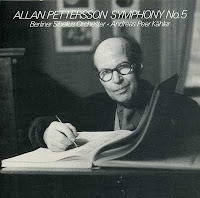
View On WordPress
#Alban Nikolai Herbst Bahnstreiksjournal#Alban Nikolai Herbst Poetik#Allan Pettersson Alban Nikolai Herbst#Allan Pettersson fünfte Sinfonie#Allan Pettersson Sechste Sinfonie Manfred Trojan#Arbeitswohnung Dunckerstraße#creative writing#Elvira M. Gross Alban Nikolai Herbst#Faust Faustkultur#Imaginäre Ären#José Lezama Lima Alban Herbst#Junge Welt Alban Nikolai Herbst#Lehrauftrag Bamberg#Nulla dies sine linea#Paolo Rumiz Europa Gesang#Phyllis Kiehl Alban Nikoaöai Herbst#Poetologie Dschungel.Anderswelt#schuldlose Schuld#Tragik Alban Nikolai Herbst#Zoom Seminbar Alban Herbst
0 notes
Text
THIS DAY IN GAY HISTORY
based on: The White Crane Institute's 'Gay Wisdom', Gay Birthdays, Gay For Today, Famous GLBT, glbt-Gay Encylopedia, Today in Gay History, Wikipedia, and more … February 25




1937 – Severo Sarduy, born in Camagüey, Cuba (d.1993) was a Cuban poet, author, playwright, and critic of Cuban literature and art.
He went to Havana in the mid-1950s to study medicine. Though he did not finish his studies, he retained a lifelong interest in science. While living in the capital he pursued his vocation for poetry and painting and came into contact with older writers such as José Rodríguez Feo and José Lezama Lima.
With the advent of the revolution in 1959, Sarduy became one of a group of young writers given the task of renewing Cuban literature. Sent to Paris by the government in 1960 to study art at the École du Louvre, Sarduy decided not to return to Cuba when his scholarship ran out a year later. Disaffected with Castro's regime and fearful of its persecution of homosexuals and the censorship imposed on writers, Sarduy never went home.
In Paris, he was connected to the group of intellectuals who produced the magazine Tel Quel, particularly to philosopher François Wahl, with whom he was openly involved.
Sarduy worked as a reader for Editions du Seuil and as editor and producer of the Radiodiffusion-Télévision Française.
In 1972 his novel Cobra won him the Medici Prize. He was among the most brilliant essayists writing in Spanish and "a powerful baroque narrator, full of surprising resources.".
As a poet, he was considered one of the greatest of his time. He was also a more or less secret painter; a major retrospective of his work was held at the Reina Sofía Museum of Madrid after his death. He died due to complications from AIDS just after finishing his autobiographical work Los pájaros de la playa.
Sarduy's posthumous Pájaros de la playa (1993; "Beach Fowl") is about a sanatorium for sufferers of AIDS, the disease that killed the author.


1942 – John Saul is an American author of suspense and horror novels. Most of his books have appeared on the New York Times Best Seller List.
Born in Pasadena, Saul grew up in Whittier, California. He went on to several colleges, variously majoring in anthropology, liberal arts and theater, but never obtained a degree. After leaving college, Saul decided to become a writer, and spent fifteen years working in various jobs while trying to improve his craft.
Prior to the start of his bestselling thriller career Saul had around ten books published under pen names, the first of which he wrote in one weekend after unexpectedly losing his job. His first book sale earned him just $200. Today he has over 60 million books in print.
In 1976, Dell Publishing contacted him and asked if he'd be interested in writing a psychological thriller. The resulting novel, Suffer the Children, appeared on all the bestseller lists in the United States and reached the number one spot in Canada. Cry for the Strangers was made into a film of the same name in 1982.
In addition to his novels, Saul has had several one-act plays produced in both Los Angeles and Seattle.
Saul lives part-time in the Pacific Northwest, both in Seattle and in the San Juan Islands, and has a residence on the Big Island of Hawaii. Saul is openly gay. He lives with his partner of 32 years, who has collaborated on several of his novels. He is a frequent speaker at the Maui Writers' Conference.


1947 – Jorge Donn was an internationally-known ballet dancer. (d.1992) He was best known for his work with the Maurice Béjart's Ballet company, and his participation as lead dancer in Claude Lelouch's film Les Uns et les Autres.
Jorge Donn was born in Buenos Aires, Argentina. He began to dance when he was 4 or 5 years old, then studied at the Colon Theatre school. In 1963, he arrived in Brussels to work in the Maurice Béjart company and soon became its principal dancer, entering into a twenty-year professional and personal relationship with Béjart.
Many of Béjart's works were created expressly for him: Bhakti (1968), Nijinsky, Clown of God (1971), Golestan, or The garden of roses (1973), Ce que l'amour me dit (1974), Notre Faust (1975), Léda (1978), Adagietto (1981) and others.
In 1976, Jorge Donn became artistic director of the Béjart's Ballet of the Twentieth Century company. In 1988, he founded his own company, L'Europa Ballet, which existed for a short time.
Jorge Donn died of AIDS on 30th November 1992 in Lausanne. Many choreographers created ballets as a tribute to him: Maurice Béjart (Ballet for Life), Denys Ganio (Tango... a rose for Jorge Donn), Carolyn Carlson (Homage for Jorge Donn), Grazia Galante (Masticando Sueños)


1950 – The Irish director Neil Jordan was born today. An Academy award-winning Irish filmmaker and novelist. He received the Academy Award for The Crying Game. As a writer/director, Jordan has a highly idiosyncratic body of work, ranging from mainstream hits like Interview With the Vampire to commercial failures like We're No Angels to a variety of more personal, low-budget art-house pictures.
Although in a conventional heterosexual marriage, unconventional sexual relationships are a recurring theme in this gay-friendly director's work, and he often finds a sympathetic side to characters audiences would traditionally consider deviant or downright horrifying. His film The Miracle, for instance, followed two characters who struggled to resist a strong, incestuous attraction, while The Crying Game made complicated, likable characters out of an IRA terrorist and a Transgendered woman. Vampire, like the Anne Rice book it was based on, focused on the intense sexual relationship of two undead men who murder humans nightly (although the pair never have sex, they are clearly lovers of a sort), accompanied by an equally lusty vampire woman who is eternally trapped in the body of a little girl. While Lestat (Tom Cruise) is depicted in an attractive but villainous manner, his lover Louis (Brad Pitt) and the child vampire Claudia (Kirsten Dunst) are meant to capture the audience's sympathy despite their predatory nature.

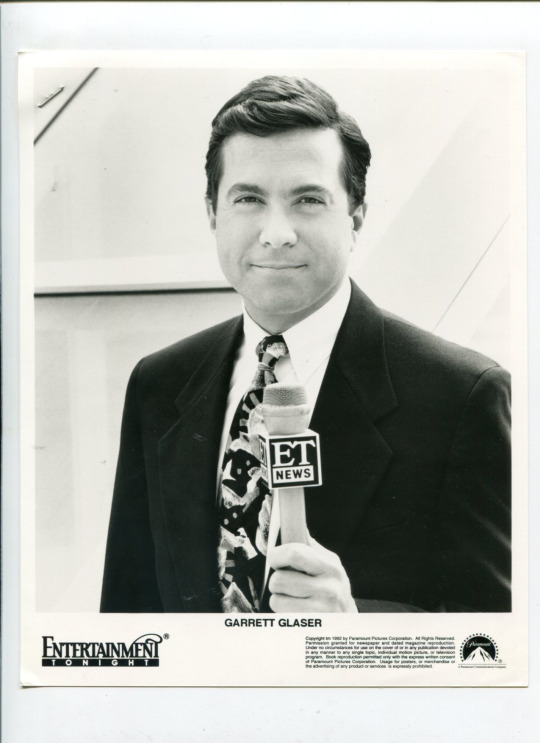
1953 – Garrett Glaser is a retired news reporter who was one of the first US television journalists to "come out" publicly as a homosexual.
His coming out occurred during the course of a speech he made before a large group of TV and radio executives at the 1992 convention of the Radio/TV News Directors Association being held in San Antonio, Texas. Although Glaser co-founded the Electronic Media Task Force of the National Lesbian/Gay Journalists Association (NLGJA) in 1990 and was later out, as well, to fellow journalists, he was not out to the public at large. That changed in 1994, when Glaser disclosed his sexual orientation during a live report on the "Channel 4 News" at KNBC-TV Los Angeles as he was reporting on the death of Elizabeth Glaser (no relation), an AIDS activist who founded the Pediatric AIDS Foundation.
Several weeks later, the Los Angeles Times published a story on the front page of its "Calendar" section about Glaser's status as one of the nation's few openly gay TV reporters.

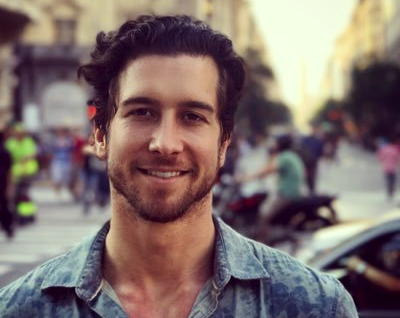
1989 – Evan Todd is an American actor and producer.
Todd grew up in Kissimmee, Florida. He finished his senior year of high school at the North Carolina School of the Arts in Winston-Salem and later graduated from the Juilliard School. Todd also studied at Yale School of Drama and London Academy of Music and Dramatic Art.
In 2007, Todd made his big screen debut as a student in the 2007 film Sydney White. He subsequently appeared in several television films and series such as Grumpy Cat's Worst Christmas Ever (2014), Switched at Birth and Jane the Virgin. In 2014, he originated the role of Kurt Kelly in Heathers: The Musical, when the rock musical had a production Off-Broadway. The following year, Todd co-produced the 2015 Broadway revival of Spring Awakening. A critical success, the rock musical, based on the German play Spring Awakening (1891) by Frank Wedekind, was nominated for both a Tony Award and a Drama Desk Award for Outstanding Revival of a Musical.
In 2016, Todd had a leading role in the comedy film 4th Man Out about a young mechanic who comes out to his straight buddies and to his family. The film received the Audience Choice Award for Best Dramatic Feature at Outfest, and was awarded the Audience Award for Best Narrative Feature at the InsideOut LGBT Film Festival. In March 2017, Todd joined the Broadway cast of Beautiful: The Carole King Musical as King’s songwriter first husband and writing partner Gerry Goffin.
Todd is openly gay. He is the co-founder of stART and artsINSIDEOUT, two summer arts empowerment programs benefiting students from his home town as well as children affected by HIV in South Africa.


2000 – On this date Henry Stuart Matis walked up to the steps of a Mormon church in Los Altos with a note reading "Do not resuscitate" pinned to his shirt, and shot himself.
He was a 32-year-old Gay man and devoted member of the The Church of Jesus Christ of Latter-day Saints, and after a lifetime spent struggling to reconcile the two, explained in a suicide note that "for the first time in over 20 years, I am free from my pains."
"As I believed that I was a Christian, I believed that I could never be Gay," he wrote. "Perhaps my death ... might become the catalyst for much good ... Your actions might help to save many young people's lives."
In the early morning, on the 10th anniversary of Matis' death, a group of local Mormons and others held a memorial vigil for Matis in Los Altos. Starting at Cuesta Park with songs and brief speeches, about 20 people then walked up Grant Road, carrying roses and candles. They ended up on the sidewalk in front of the LDS stake center on Grant Road in Los Altos, where they set up a small memorial display with an image of Matis' tombstone and stories about him and other Gay Mormons who have committed suicide.
Matis' body was found at the center, which serves as the headquarters for South Bay Mormon congregations, at about 7:30 a.m. on Feb. 25, 2000. Robert Rees of the Santa Cruz stake, who served as a spiritual adviser to Matis, said the event was meant "to honor a good man who eft life much earlier than he should have, whose passing was tragic but whose message was one of hope to other people." According to a statement on its Web site, the Mormon church believes that acting on "same-gender attraction" is a sin and Gay church members must remain celibate.
George Cole, a San Francisco resident who is Gay and serves on the executive committee of Affirmation, a support and advocacy group for Gay and Lesbian current and former Mormons, said he didn't know Matis personally but has "lost too many very good friends to suicide. "I know what it is like to seriously consider taking your life," he said. Cole said he left the Mormon church in 2002.
"I chose happiness and fulfillment at the cost of not having the church in my own life," he said. Matis died just a couple of weeks before Proposition 22, the anti-Gay marriage measure in 2000 that preceded 2008's Proposition 8, went before voters, and his death was often portrayed as a political statement, though Matis did not mention the initiative in his suicide note.

2007 – On this date the 79th Academy Awards were hosted by Ellen DeGeneres in Hollywood.



16 notes
·
View notes
Text
Ángel de la jiribilla, ruega por nosotros. Y sonríe. Obliga a que suceda. Enseña una de tus alas, lee: Realízate, cúmplete, sé anterior a la muerte. Vigila las cenizas que retornan. Sé el guardián del etrusco potens, de la posibilidad infinita. Repite: Lo imposible al actuar sobre lo posible engendra un posible en la infinidad. Ya la imagen ha creado una causalidad, es el alba de la era poética entre nosotros. Ahora podemos penetrar, ángel de la jiribilla, en la sentencia de los Evangelios; Llevamos un tesoro en un vaso de barro. Ahora ya sabemos que la única certeza se engendra en lo que nos rebasa. Y que el icárico intento de lo imposible es la única seguridad que se puede alcanzar, donde tú tienes que estar ahora, ángel de la jiribilla.
- José Lezama Lima
14 notes
·
View notes
Text
"All or nothing in confidential matters always hides the other half, where you know you are wanted..."
(Paradiso. José Lezama Lima, Cuban writer)
Photo: @JosivalFotos (en X)
Model: #JoséLuis
#JosivalFotos #male #young #naked #MaleBeauty #portrait #26Enero #guys
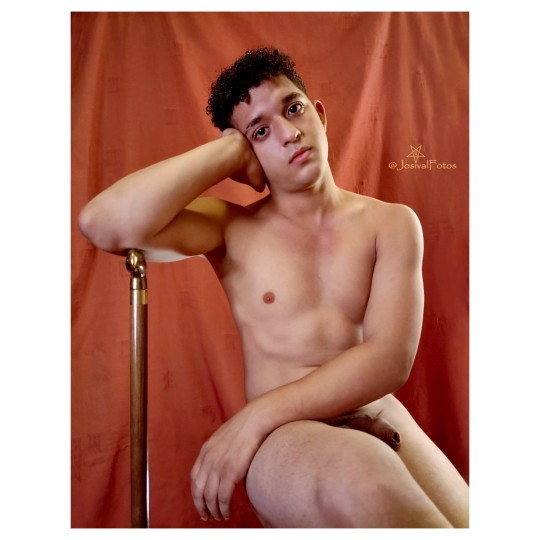
"El todo o nada en materia confidencial oculta siempre la otra mitad, donde se sabe buscado..."
(Paradiso. José Lezama Lima, escritor cubano)
Foto: @JosivalFotos (en X)
Monocromática en @JosivalNegro (en X)
Modelo: #JoséLuis
#JosivalFotos #male #joven #desnudo #MaleBeauty
2 notes
·
View notes
Text
Oh si ya entre relámpagos y lebreles tu lengua se acrecienta
y tu espada nueva con nervios de sal se humedece o se arroba.
Es posible que la lluvia me añore o entre nieves el dolor no se sienta
si el alcohol centellea y el canario sobre el mármol se dora.
El aire en el oído se muere sin recordar
el afán de enrojecer las conchas que tienen las hilanderas.
Al atravesar el río, el jazmín o el diamante, tenemos que llorar
para que los gusanos nieven o mueran en dos largas esperas.
José Lezama Lima
#José Lezama Lima#poesía#fragmento#literatura#lit#mármol#dolor#lengua#sal#lluvia#alcohol#aire#oído#río#jazmín#diamante#esperas#gusanos#hilanderas#canario#espada#nervios#José María Andrés Fernando Lezama Lima
6 notes
·
View notes
Text
Poésie - José Lezama Lima, María Zambrano
Poésie - José Lezama Lima, María Zambrano #Philosophie #Poésie #JeudiCestPoésie #Poesia #Cuba #Espagnol #Español #Zambrano
Poésie et Philosophie
Poésie n° 22
María Zambrano
María se nos ha hecho tan transparenteque la vemos al mismo tiempoen Suiza, en Roma o en La Habana.
Acompañada de Aracelino le teme al fuego ni al hielo.
Tiene los gatos frígidosy los gatos térmicos,aquellos fantasmas elásticos de Baudelairela miran tan despaciosamenteque María temerosa comienza a escribir.
La he oído conversar desde Platón…
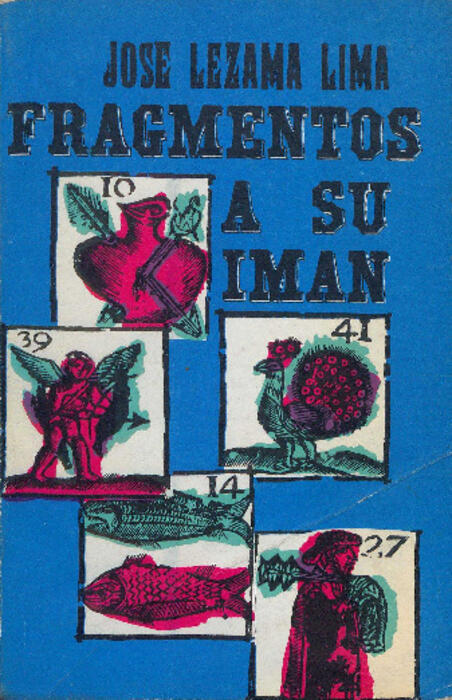
View On WordPress
#JeudiCestPoésie#Cuba#Español#espagnol#Jeudi c’est Poésie#José Lezama Lima#María Zambrano#Philosophie#Poésie#Poesia
0 notes
Photo

1953 - El llano en llamas (Juan Rulfo), Fahrenheit 451 (Ray Bradbury), El largo adiós (Raymond Chandler), El innombrable (Samuel Beckett) 1954 - El señor de los anillos (J.R.R. Tolkien), El señor de las moscas (William Golding), Una fábula (William Faulkner), El maestro de Go (Yasunari Kawabata), El rumor de la montaña (Yasunari Kawabata), Buenos días, tristeza (Francoise Sagan) 1955 - Pedro Páramo (Juan Rulfo), Lolita (Vladimir Nabokov), El fin de la eternidad (Isaac Asimov) 1956 - Final del juego (Julio Cortázar) 1957 - Fin de partida (Samuel Beckett), En el camino (Jack Kerouac), Doctor Zhivago (Boris Pasternak), El barón rampante (Italo Calvino) 1958 - Desayuno en Tiffany's (Truman Capote) 1959 - Las armas secretas (Julio Cortázar), El tambor de hojalata (Günter Grass), La tregua (Mario Benedetti), Las sirenas de Titán (Kurt Vonnegut) 1960 - Matar a un ruiseñor (Harper Lee), Cántico por Leibowitz (Walter M. Miller), Tropas del espacio (Robert A. Heinlein) 1961 - La casa de las bellas durmientes (Yasunari Kawabata), El astillero (Juan Carlos Onetti), Sobre héroes y tumbas (Ernesto Sábato), Solaris (Stanislav Lem), Trampa 22 (Joseph Heller) 1962 - Historias de cronopios y de famas (Julio Cortázar), La naranja mecánica (Anthony Burgess), Los funerales de la Mamá Grande (Gabriel García Márquez), El hombre en el castillo (Philip K. Dick), Alguien voló sobre el nido del cuco (Ken Kesey), La muerte de Artemio Cruz (Carlos Fuentes), Aura (Carlos Fuentes), El siglo de las luces (Alejo Carpentier), El cuaderno dorado (Doris Lessing), 1963 - La ciudad y los perros (Mario Vargas Llosa), Rayuela (Julio Cortázar), V (Thomas Pynchon) 1964 - Lo bello y lo triste (Yasunari Kawabata), Una cuestión personal (Kenzaburo Oe) 1965 - Tres tristes tigres (Guillermo Cabrera Infante), El lugar sin límites (José Donoso) 1966 - Paradiso (José Lezama Lima), La casa verde (Mario Vargas Llosa), Todos los fuegos el fuego (Julio Cortázar), A sangre fría (Truman Capote), La subasta del lote 49 (Thomas Pynchon), Cinco horas con Mario (Miguel Delibes) 1967 - Cien años de soledad (Gabriel García Márquez), La broma (Milan Kundera), El maestro y Margarita (Mijaíl Bulgákov) https://www.instagram.com/p/CibA1oYu4lF/?igshid=NGJjMDIxMWI=
3 notes
·
View notes
Text
René Portocarrero nunca paro!!!
Entre 1924 y 1926 asiste a breves cursos en la Academia Villate y San Alejandro, y continúa su aprendizaje de forma autodidacta. Primera exposición personal en el Lyceum de La Habana en 1934. En 1937 es orientador del Estudio Libre para Pintores y Escultores de La Habana y colabora en la revista Verbum, primera vinculación con el grupo de artistas e intelectuales que se forma alrededor de José Lezama Lima, y que se traducirá en las numerosas ilustraciones y algún texto para las sucesivas revistas dirigidas por este poeta: Espuela de Plata y Orígenes. En 1943 realiza importantes series: Interiores del Cerro, Festines, Figuras para una mitología imaginaria, en donde se definen los rasgos más importantes de su poética. Pinta paisajes rurales y realiza una importante serie de pasteles en los que comienza a desarrollar el tema de las fiestas populares. Alrededor de 1950 inicia la práctica de la cerámica en el Taller Experimental de Santiago de Las Vegas. Recibe en 1951 el Premio Nacional de Pintura por su óleo Homenaje a Trinidad, antecedente de sus “paisajes de La Habana”. Publica Máscaras, colección de doce dibujos basados en el carnaval de Cienfuegos y pinta su importante serie Color de Cuba compuesta de diablitos y santos populares, figuras ornamentadas, figuras de carnaval y paisajes de La Habana. En 1964 obtiene el Premio Internacional Sambra en la VII Bienal de Sao Paulo como reconocimiento al mejor conjunto presentado y dos años después sus Retratos de Flora, son exhibidos en la XXXIII Bienal de Venecia. Entre 1970 y 1971 pinta la extensa colección de Carnavales. Entre sus últimas series están Figuras sedentes (1975-1976), Transfiguración y fuga y Madres eternas (ambas de 1982). Durante toda su vida artística ejecuta numerosos murales en diversas técnicas. Entre los más importantes están Familia campesina para la Escuela Normal para Maestros de Santa Clara (1937); para la cárcel de La Habana y la Iglesia Parroquial de Bauta (1944); para el edificio Esso de La Habana (1950); Historia de Las Antillas, en cerámica, para el hotel Habana Libre (1957); Figuras de teatro en el vestíbulo de la Sala Covarrubias del Teatro Nacional de La Habana (1961) y un gran mural de cerámica de 216 metros cuadrados en el Palacio de la Revolución, La Habana (1967-1968).


0 notes